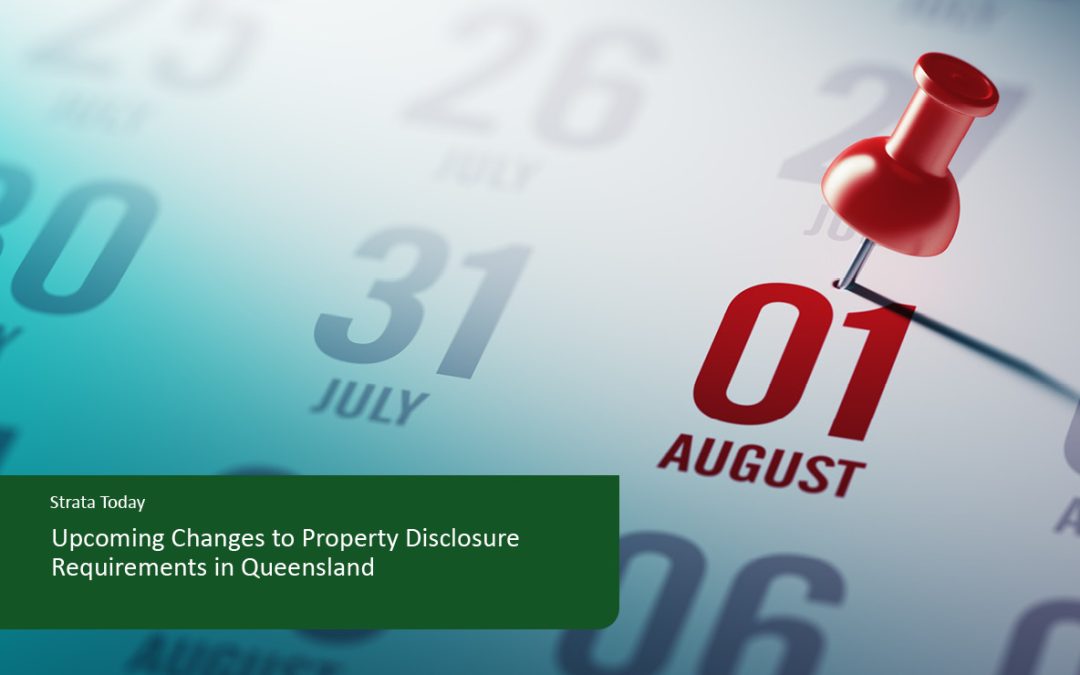If you’re thinking of selling your unit, townhouse, or home in Queensland, be aware that new seller disclosure laws come into effect on 1st August 2025. These changes apply to both residential and commercial property sales and are aimed at increasing transparency for buyers.
What does this mean for the sale of your unit or townhouse?
Before a buyer signs a contract to purchase a lot, the seller is legally required to provide certain documentation. This includes:
- A disclosure statement specific to the lot; and
- Any documents or certificates mandated by current regulations.
What is included in the seller disclosure statement?
The purpose of the seller disclosure statement is to inform the buyer about key legal, regulatory, and other relevant aspects of the property. In addition to basic information, the seller must disclose items such as:
- a copy of the title search and registered survey plan for the property;
- for lots that are part of a community titles scheme, a copy of the community management statement;
- for those same properties, a Form 33 body corporate certificate (which replaces the previous BCCM Act s206 disclosure form);
- details of any existing residential tenancy or rooming accommodation agreements (including unregistered oral agreements);
- information on zoning, proposed transport infrastructure, or any notices regarding land resumption;
- whether the property appears on the Contaminated Land Register or Environmental Management Register;
- any applications or orders under the Neighbourhood Disputes (Dividing Fences and Trees) Act 2011 (Qld);
- details of any heritage listings under Queensland or federal law;
- notices regarding building structures, such as enforcement actions or show cause notices, and details about swimming pools if applicable;
- information on council rates and water charges.
What additional information must be included in the BCCM Form 33?
Form 33, which is specific to community titles schemes, requires extra details beyond standard disclosure. These include:
- outstanding or upcoming payments to the body corporate;
- the current balance of the body corporate’s sinking fund;
- any existing agreements with caretaking or letting agents;
- information on any building management statements affecting the property;
- whether electricity is provided through an embedded network;
- the most recent financial statement for the lot issued by the body corporate;
- clarification of any other financial obligations the buyer may have;
- any improvements to shared areas that the seller is responsible for;
- a list of assets held by the body corporate; and
- details of the body corporate’s current insurance coverage.
This form must be signed by someone legally authorised to act on behalf of the body corporate.
What Isn’t Covered?
Some important issues still won’t be included in the disclosure and will remain the buyer’s responsibility to investigate:
- flooding or natural hazard history;
- structural soundness and pest/termite issues;
- building or development approvals;
- the presence of asbestos;
- utility service connections;
- physical defects in the common property;
- current, past or planned body corporate disputes or court actions;
- orders made against the Body Corporate by an adjudicator, a tribunal or a Court; or
- the lawful use of lots, including whether a lot can be used for short-term letting
Why This Matters to Buyers
These reforms aim to improve transparency and minimise disputes by ensuring buyers are fully informed prior to committing to a purchase. The required disclosures provide a comprehensive view of the legal, financial, and regulatory aspects of the property, helping buyers avoid unexpected costs or complications post-settlement. With this information purchasers can approach their purchase into a community titles scheme with a greater understanding of the nature of their property.
